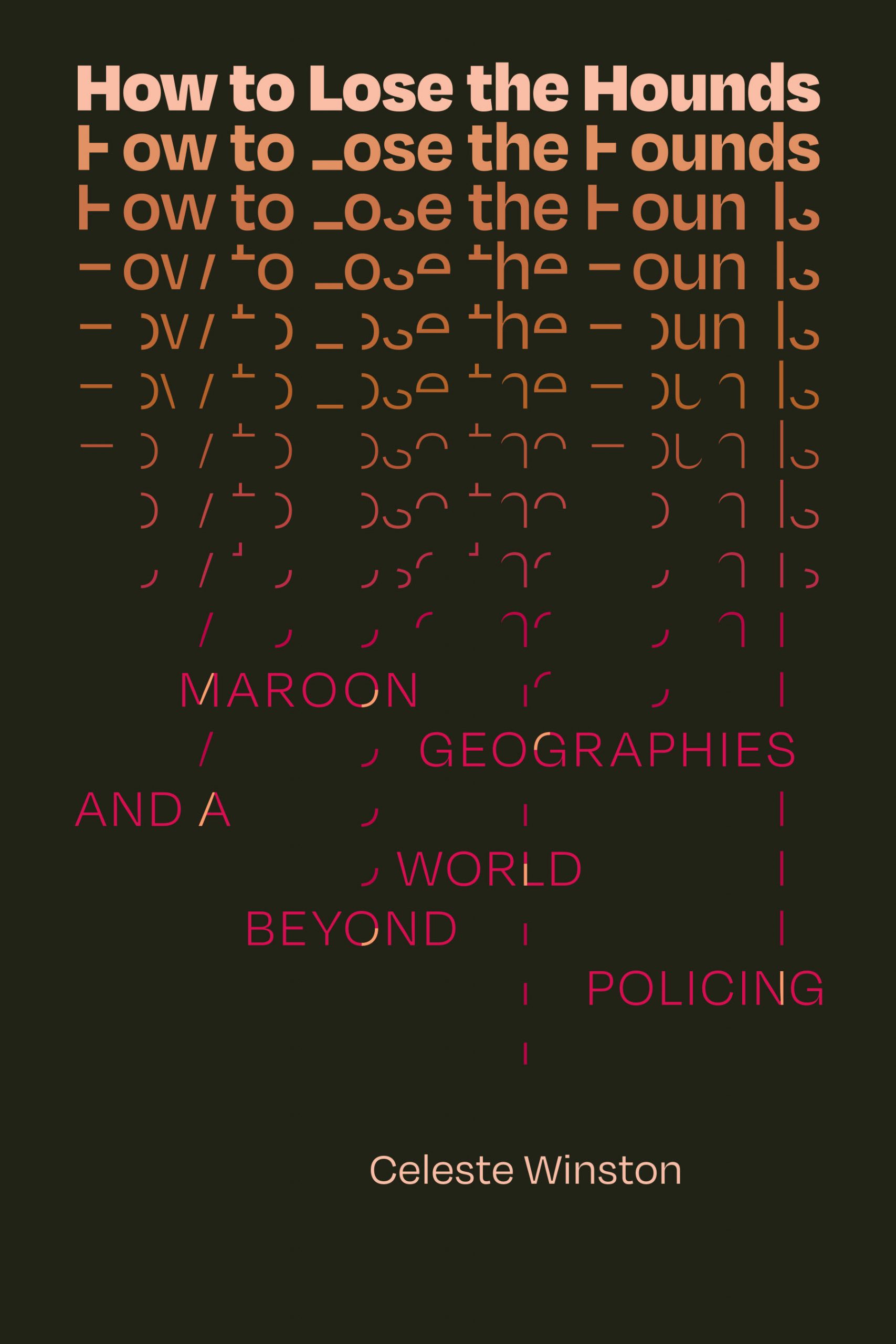In 2013 Maryland governor Martin O’Malley proclaimed November 1—the date that Maryland’s state constitution abolished slavery in 1864—as “Maryland Emancipation Day.” This began an annual statewide tradition of programs, festivals, and exhibits held during the first weekend of each November to commemorate the end of slavery and historical struggles for slavery’s abolition. As part of the 2017 Maryland Emancipation Day celebrations, I went on a guided group hike of Montgomery County’s Underground Railroad Experience Trail. The hike took place in Sandy Spring, an area known for its history of Black residents and Quakers harboring and assisting fugitives from slavery.
My group’s “conductor” was a white former military officer who lives in Montgomery County. At the beginning of the hike, which started on a former farm that once operated on enslaved labor, the conductor pointed out our proximity to the Montgomery County Division of the Maryland–National Capital Park Police horse training facility. He warned us to keep our eyes out for police horse droppings that we might find scattered along the Underground Railroad trail. He then guided us along the trail, pausing at various points to share strategies that people fleeing enslavement used to avoid being caught, such as fleeing under the cover of rain, traveling in forested areas, hiding and resting in prickly shrubs, using hollow trees as shelter, disguising themselves, and rubbing dung or onion on their shoes, clothing, or bodies.
The conductor’s warning to look out for physical traces of police presence as a preface to his account of flight strategies on the Underground Railroad is a symbolic reminder of the dialectical tension between marronage and policing. Marronage asserts a demand for Black freedom and life, while policing operates as a direct negation of those assertions.
Maroon folklore is a technology of escape that emerged during slavery to convey vital local knowledge about routes to freedom. Building from Alexis Pauline Gumbs’s definition of technology as “the brilliance of making something out of anything, of making what we need out of what we had,” I consider maroon folklore a technology rooted in Black knowledges and practices of world-building for the creation and maintenance of Black life. Stories about maroons gave hope to enslaved Black people and pointed them toward the possibility of—and methods for—their own escapes. This folklore of maroon fugitivity is part of a larger Black folklore tradition that connects marronage all the way to flight from prisons and the police state.
As Daryl Cumber Dance argues, escape is “the oldest and most enduring theme in Black folklore and literature,” which often recount escapes from enslavers, slave catchers and their hounds, sheriffs, the Ku Klux Klan, and prison. Dance goes on to argue that in the “Black folk lexicon, noted for its flexibility, its originality, and its vivid metaphors, there is no idea that has so many different words to express it as the idea of leaving, fleeing, running.”
More from our decarceral brainstorm
Every week, Inquest aims to bring you insights from people thinking through and working for a world without mass incarceration.
Sign up for our newsletter for the latest.
Newsletter
Maroon folklore is thus more than a cultural practice of storytelling about Black flight. Following the example of Clyde Woods, who theorized the blues as not only an “aesthetic tradition” but also an entire “theory of social and economic development and change”—what he termed the “blues epistemology”—I examine maroon folklore as a technology of Black placemaking. In the words of Katherine McKittrick, “stories make place” and the acts of storytelling that produce Black geographies offer strategic lessons “in and for [B]lack life.”
Understanding storytelling in this way reveals the unfinished nature of land. Land is continuously shaped—landscaped—according to particular vantage points and aesthetics. While racist, sexist, and other dominating discursive traditions reflect and sustain prevailing landscapes, maroon folklore comprises a “poetics of landscape”—a set of creative acts that subvert dominant geographies and shape how we “organize, build, and imagine” our material surroundings as part of Black selfhood and community history. Maroon folklore offers a vantage point from which to see the world differently and a practice by which to shape land according to visions of Black freedom.
Since the abolition of slavery, maroon folklore has continued to shape how residents of Montgomery County’s historically Black communities define and struggle for Black freedom today. While local stories of flight from slavery have been transformed by the passage of time and transferals of oral history, they remain a bedrock of many Black residents’ understandings of local Black placemaking. Former residents of Sugarland, for example, still discuss the history of resistance to slavery there. Black Sugarland-area residents are believed to have developed a “money line” during slavery through which people could leave money for fugitives to retrieve as they traveled toward freedom. Sugarland residents also allegedly hid up to twelve maroons at a time in a small cave, a secret entrance to which was built in a false floor of a local log cabin’s fireplace. Across North America, caves were used to hide maroons—even Nat Turner sought shelter in a cave.
The broader body of Black folklore in which Montgomery County’s oral tradition of flight is situated reveals important lessons for how marronage can serve as a guide to police abolition. Black flight folklore can inform abolitionist praxes today through its celebration of disavowing authority. Some of the most popular figures in the Black folklore tradition are runners who, as Dance writes, are admired for their “absolute rejection of established authority figures—Ole Massa, the sheriff, the judge.” The trickster Brer Rabbit, as one example, makes trouble to survive and then hides out in briar patches. Stories about Brer Rabbit were shared by enslaved Black people and popularized more generally in early southern literature. Brer Rabbit tales not only challenged established limits of authority but also set new ethical boundaries, Sergio Lussana writes, such as “friendship, altruism, and commitment to vulnerable members of the community,” that were crucial for Black survival during slavery and its aftermath.
Black folklore also demonstrates how to recast people beyond the distinction of innocence and guilt upon which the criminal legal system bases its existence. Black runner figures from slavery through the present day are respected in spite of—and at times because of—their lack of innocence as determined by law. Dance writes:
One must remember that the Black runner, whether he or she be Nat Turner or Harriet Tubman or Frederick Douglass . . . or Stagolee . . . , is always labeled and regarded by the system as a fugitive, a desperado, a dangerous criminal, a vicious threat to society; and his flight is always in violation of the established law. . . . While on one level it may seem blasphemous to link the name of so valiant a heroine as Harriet Tubman with that of a cold blooded murderer, that chain was forged by their respective societies who judged them both the same and hunted them in like manner as similarly dangerous threats to the maintenance of order.
The rejection of the false binary between innocence and guilt in the Black folklore tradition has roots in marronage. Since no fugitive from slavery was innocent—in the sense that they “stole” themselves away from their enslavers’ keep—Black people from their beginnings in the United States had to define their liberation beyond narrow conceptions of innocence in the face of the law. Since slavery, Black communities have often continued to reject innocence as a guiding factor for granting freedom and life, and have developed their own boundaries of behavior and forms of accountability. These alternative measures form the basis of fugitive infrastructure and maroon justice.
As a set of beliefs and stories told in a community across generations, folklore remains forever incomplete and unsettled. It is a combination of “myth, rumor, and story,” in the words of Andrea Roberts. McKittrick explains that in the space of unknowing, folklore offers a refusal of “the lawlike systems that underwrite the production of space; instead . . . hold[ing] in it the possibility of . . . a totally different system of geographic knowledge that cannot replicate subordination precisely because it is born of and holds on to the unknowable.”
In the questions that folklore leaves unanswered, or the gaps in the story, sit an important invitation to imagine. How did these Black people escape enslavement and policing? What tactics did they use? How did they hold each other accountable? How did they remain safe in a world where police could not be called on? How can their stories guide continued struggles against state and state-sanctioned racial violence?
In these unanswered questions lie possibilities for envisioning solutions that build on Black histories of struggle while not conforming to temporal and geographic limitations. Black fugitivity folklore can thus be understood as what Judah Schept terms an “abolitionist habitus”: a generative structure, or grammar, for abolition within which infinite iterations of noncarceral practices and institutions are possible. In this way, Black folklore critically responds to the ways that carceral logics and practices reproduce themselves by transforming according to time and space. Transforming alongside such carceral logics and practices, Black fugitivity folklore continues to offer innovative ideas for flight and placemaking beyond policing.
In terms of developing a vision of police abolition, Black flight folklore illuminates how fugitivity can be a strategy of placemaking that offers refuge from the racially violent criminal legal system. In Montgomery County, the Black community-based oral history tradition around marronage undergirds multigenerational practices of producing relatively autonomous Black spaces. Black freedom continues to take shape in maroon geographies, wherein state violence is evaded through isolation, collectivity, and systems of care.
Black flight from and placemaking beyond violence is both a persistent form of agency—“through which,” Ruth Wilson Gilmore writes, “ordinary people organize to relieve the pressures that kill them and their kin”—and a resolute structure held together by connection and remembrance. The enduring structure and practice of marronage offer lessons for radically rethinking and reworking public safety beyond policing.
This article is excerpted from How to Lose the Hounds: Maroon Geographies and a World Beyond Policing by Celeste Winston. Copyright Duke University Press, 2023.
Image: Angelo Abear/Unsplash


